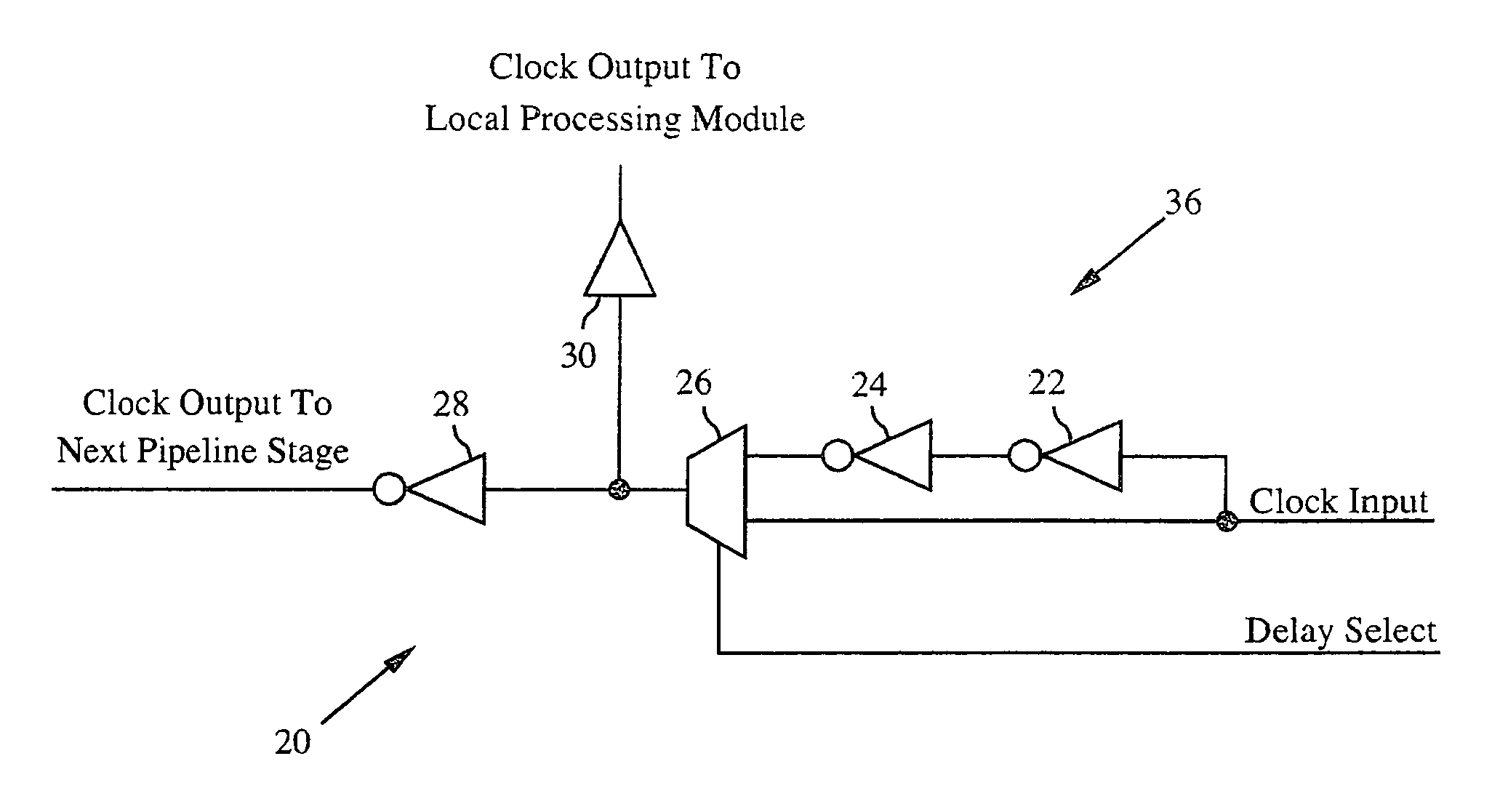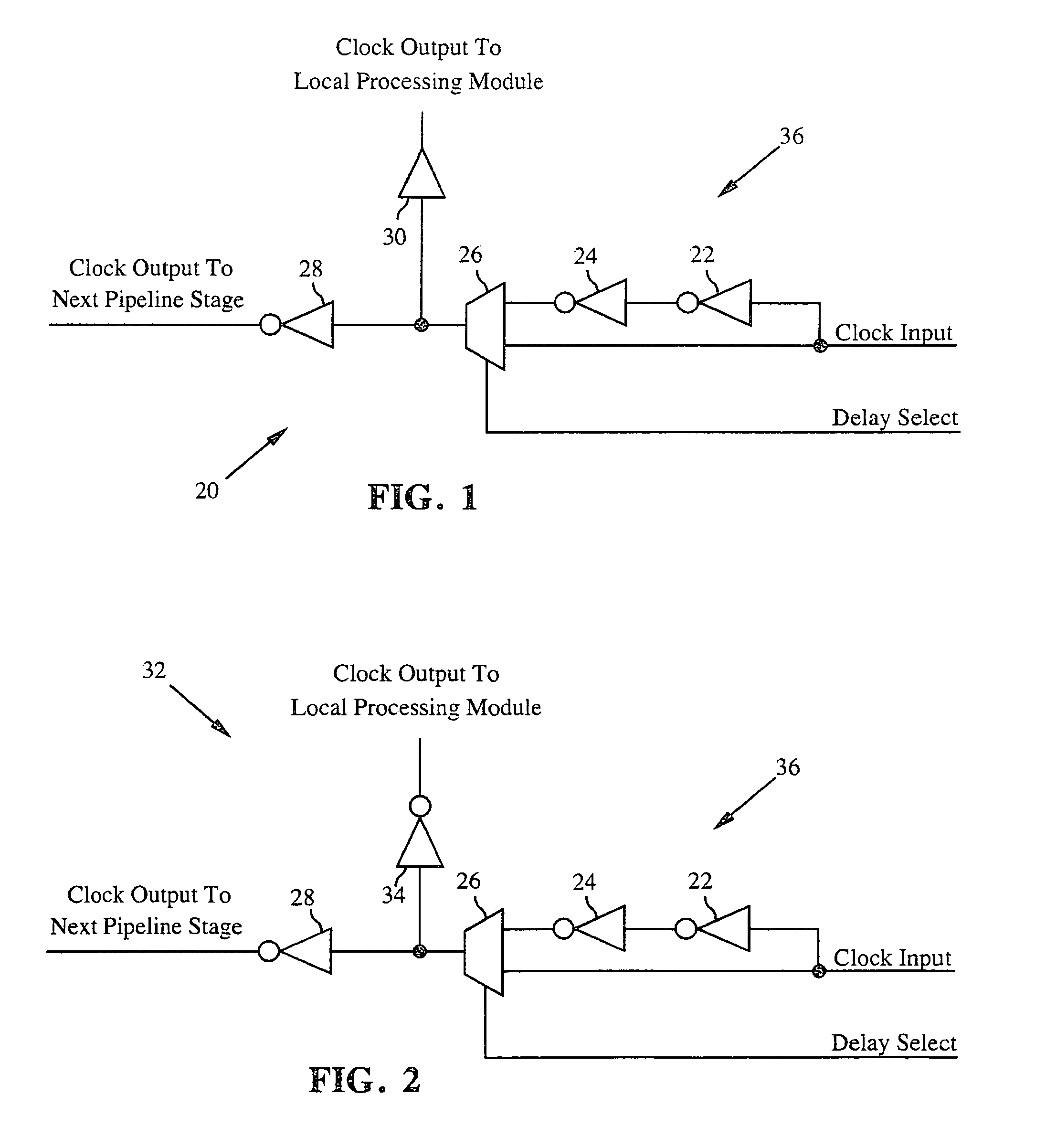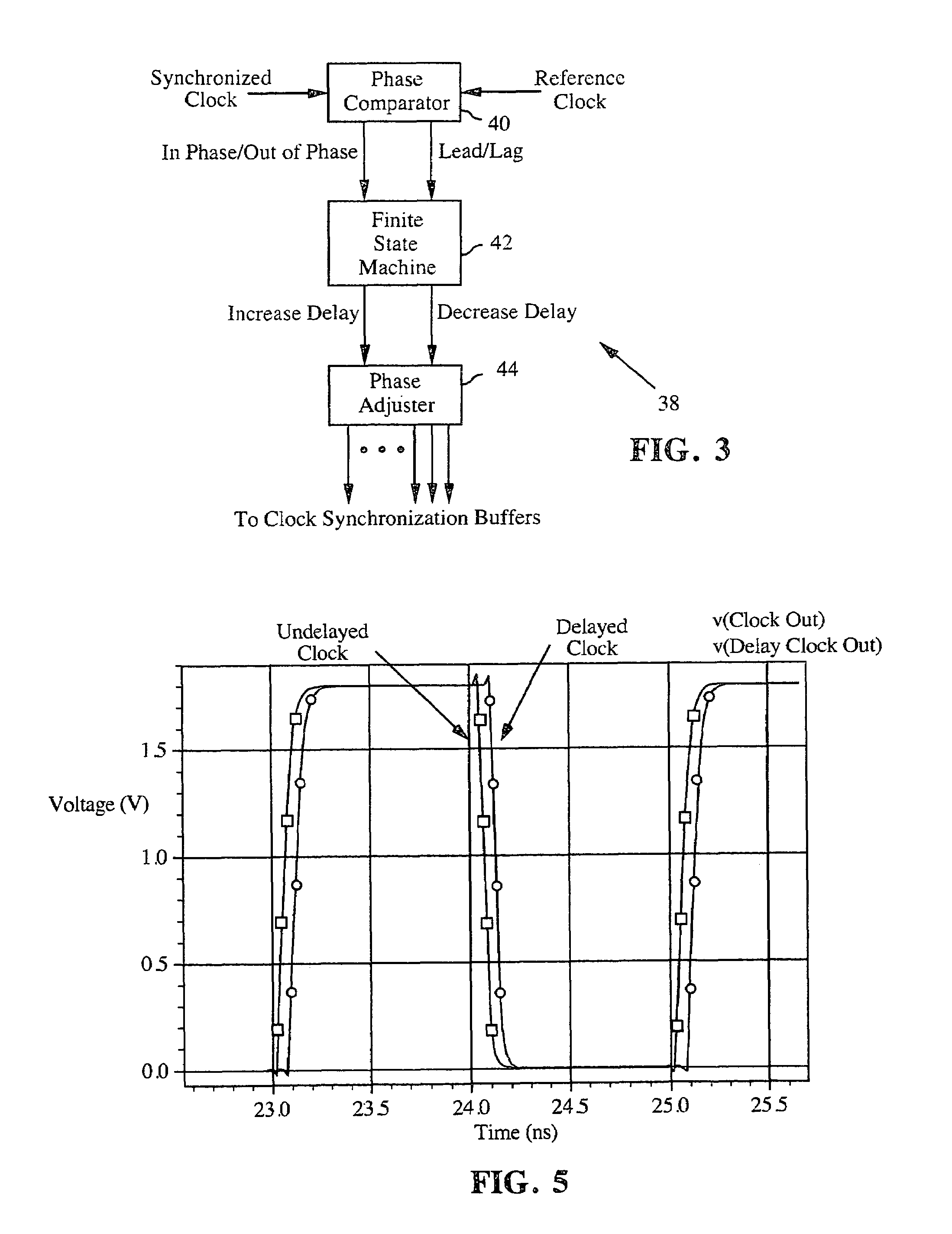Automatic clock synchronization and distribution circuit for counter clock flow pipelined systems
a distribution circuit and clock flow technology, applied in the direction of generating/distributing signals, pulse techniques, instruments, etc., can solve the problems of occupying a significant amount of space, requiring a large number of high-power clock distribution buffers, and requiring a large amount of hea
- Summary
- Abstract
- Description
- Claims
- Application Information
AI Technical Summary
Benefits of technology
Problems solved by technology
Method used
Image
Examples
Embodiment Construction
[0026]FIG. 1 illustrates a non-inverting clock synchronization buffer circuit 20 according to the present invention. A pair of inverters 22 and 24 is connected in series with the output of the inverter 24 being connected to a first input of a multiplexer 26. A Clock Input signal is input to the inverter 22 and to a second input of the multiplexer 26. A Delay Select signal is input to a third input of the multiplexer 26. The signal output from the multiplexer 26 is input to an inverting amplifier 28, which provides a Clock Output signal to a next pipeline stage (not shown in FIG. 1). The signal output from the multiplexer 28 is also input to a non-inverting amplifier 30, which provides a Clock Output signal to a local processing module (not shown in FIG. 1).
[0027]FIG. 2 illustrates an inverting second clock synchronization buffer circuit 32 that is similar to the clock buffer circuit 20 with the only difference being that in the inverting clock synchronization buffer circuit has an i...
PUM
 Login to View More
Login to View More Abstract
Description
Claims
Application Information
 Login to View More
Login to View More - R&D
- Intellectual Property
- Life Sciences
- Materials
- Tech Scout
- Unparalleled Data Quality
- Higher Quality Content
- 60% Fewer Hallucinations
Browse by: Latest US Patents, China's latest patents, Technical Efficacy Thesaurus, Application Domain, Technology Topic, Popular Technical Reports.
© 2025 PatSnap. All rights reserved.Legal|Privacy policy|Modern Slavery Act Transparency Statement|Sitemap|About US| Contact US: help@patsnap.com



